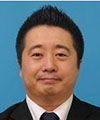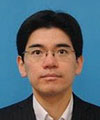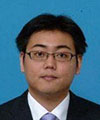 |
|||||||||||
|
|
|||||||||||
|
Feature Articles: Technological Development for Network Virtualization Vol. 12, No. 8, pp. 1–5, Aug. 2014. https://doi.org/10.53829/ntr201408fa1 Current Status of Development of Network Virtualization TechnologiesAbstractNTT laboratories have been active in researching and developing network virtualization technology as a key technology of future networks, which will be next-generation carrier networks. In this article, we outline the carrier network architecture, focusing specifically on the network virtualization technology implemented in it. We also introduce the research on elemental technologies being conducted by NTT laboratories. Keywords: network virtualization, NFV, SDN 1. IntroductionThe increased performance of general-purpose servers and the technological advancements in software have accelerated the deployment of virtualization technologies in datacenters. Network virtualization technology, in which such information technology advancements apply to carrier networks, has been the focus of a lot of attention recently and is expected to improve the scalability and reliability of carrier networks at low cost. Here, we introduce the network virtualization technology applied to the architecture of a future carrier network and also describe its elemental technologies. 2. Network virtualization technologyTraditional carrier networks have been composed of many kinds of dedicated equipment, where each network function is implemented in a different piece of equipment. In contrast, the introduction of network virtualization technology, in which control functions and forwarding functions are distinctly separate, is changing the existing network architecture (Fig. 1). In the new architecture, intelligent control and service functions are implemented by software and aggregated in the cloud, while a forwarding network is composed of simple hardware with a specialized forwarding function. The development of two technologies—network functions virtualisation* (NFV) and software-defined networking (SDN)—has recently been accelerated in order to structure this kind of network architecture.
NFV is a technology in which network functions that are conventionally implemented in dedicated hardware are implemented by software on general-purpose servers. Performance increases in general-purpose servers and technological advances in virtualization technologies have led to NFV with carrier-grade performance, scalability, and reliability. The application of NFV to carrier networks is expected to enable high scalability and reliability at low cost, as well as rapid service deployment, flexible resource assignment according to the demand for each service, and service deployment without the EoL (end of life) restrictions of hardware-based equipment. Additionally, because many different network functions are aggregated in general-purpose servers, reductions in CAPEX (capital expenditures) and OPEX (operating expenses), lower power consumption, and a reduced equipment footprint are also expected. ETSI (European Telecommunications Standards Institute) has played a leading role in studying NFV under an Industry Specification Group. Participants from many major carriers and equipment vendors from all over the world are actively focusing on NFV and are pushing the work forward. SDN consists of technology to control and manage network equipment in a centralized fashion by means of software techniques. Applying SDN to carrier networks makes it possible to separate control and forwarding functions, which have been implemented in a single piece of equipment until now, and to aggregate control functions in a cloud. Network carriers expect to reduce OPEX drastically and to provide consumers and service providers with flexible network services through the use of SDN’s centralized control and management features. Major elemental technologies applied to realize SDN include OpenFlow, which was standardized by ONF (Open Networking Foundation), and I2RS (Interface to the Routing System), standardized by IETF (The Internet Engineering Task Force).
3. Network architecture in virtualization era3.1 Future networksNTT laboratories have been actively researching and developing future networks, which will be next-generation carrier networks. As in the past, future networks are expected to offer steady communication services as a vital social infrastructure. These include fixed consumer services such as Internet access and voice services, mobile services such as mobile voice and broadband services, and enterprise services such as virtual private networks and wide-area LAN (local area network) services. Such future networks are also required to have the capability to offer new services rapidly and flexibly in order to meet diversified needs. Furthermore, these networks will have some mechanisms developers can use to create brand new services in cooperation with service providers. From a carrier viewpoint, operating and managing a network that can become increasingly complicated and sophisticated is a critical issue. NFV and SDN are expected to be key technologies to build the future networks, which must meet various demands and needs. Next, we outline the architecture of these future networks and describe the network virtualization technologies used in them. 3.2 Network virtualization technologies in future networksFuture networks are composed of two hierarchical structures—a forwarding network and a carrier cloud—and are connected to service providers that can offer network services using the future networks’ resources (Fig. 2). There are four key network virtualization technologies that compose the future networks, as follows (Fig. 3).
(1) Network-function-offering technology for service providers This technology provides service providers with network functions and resources owned by the future networks. For instance, a service provider can easily create its own network service by combining its own application with a logical network offered by the future networks. We can use SDN technologies to build a logical network. (2) Integrated control technology This technology manages and controls both computing resources and network resources. Computing resources are deployed in a carrier cloud as general-purpose servers, whereas network resources are deployed as network equipment. Integrated control technology consists of an orchestrator, which manages the assignment of resources throughout the network, and a network controller, which controls the network equipment. The orchestrator reassigns resources in response to variations in the demand for each service and resource requests from service providers. The network controller controls a forwarding network composed of general-purpose switches upon request from the orchestrator. The interface and protocol specifications between a network controller and a piece of network equipment is referred to as a southbound API (application programming interface). OpenFlow is one of the most popular southbound API protocols. Additionally, work is proceeding to advance network operation using big data. For instance, the network controller manages a network based on big data analysis of traffic variations in order to improve QoE (quality of experience) at low cost. (3) Carrier cloud technology This technology offers computing resources to virtualized network functions with carrier-grade scalability and reliability. It is a fundamental technology that enables various carrier network functions to be implemented as NFV. It is expected to achieve rapid and efficient development of services and improved tolerance for traffic variations. Furthermore, it can build a disaster-resistant network which, for instance, concentrates network resources on the most basic communication services—such as voice services—as a lifeline in the event of a large-scale disaster. (4) Forwarding network technology This technology builds a forwarding network using simple and low-cost network equipment with a specialized forwarding function. Extracting intelligent control and service functions from traditional routers and transport systems to be virtualized and implemented by a software application as a network controller enables network equipment to be specialized to provide a forwarding function. Carriers expect this trend to result in the commoditization of network equipment and low-cost procurement. Additionally, it can lead to a reduction in the amount of network equipment needed since SDN technology can integrate multiple network devices used for each layer into a single device. For instance, traditional routers and layer-2 switches might be integrated into a single general-purpose switch. In the NFV environment where a lot of network functions are accommodated in a single physical server, virtual switches are also necessary in order to forward packets to an appropriate virtual machine. High-performance virtual switches are required in a carrier network in order to prevent bottlenecks in the forwarding performance. 4. Research and development of elemental technologies for network virtualizationThe network virtualization technologies for future networks cover a very broad range of application areas. NTT laboratories are broadly promoting research and development of the elemental technologies that compose network virtualization technology. We introduce some of these concrete efforts in these Feature Articles. In the article “Service Function Chaining Technology for Future Networks,” we introduce a service function chaining technology as one of the network-function-offering technologies for service providers [1]. In the article “Network Virtualization Technology for Implementing Future Networks,” we introduce an orchestration technology as an example of integrated control technology, a server platform technology as an example of carrier cloud technology, and a centralized control technology for transport networks as an example of forwarding network technology [2]. In the article “Ryu SDN Framework—Open-source SDN Platform Software,” we introduce an SDN controller technology (Ryu SDN Framework), which is an essential technology for controlling a virtualized network [3]. Finally, in the article “Fundamental Research Activities on Network Virtualization,” we introduce an SDN software switch (Lagopus), which is a core technology for packet forwarding on top of general-purpose servers and switches and a substantive industry-academia-government experimental collaboration to deploy an end-to-end virtual network on a research network [4]. References
|
|||||||||||


















